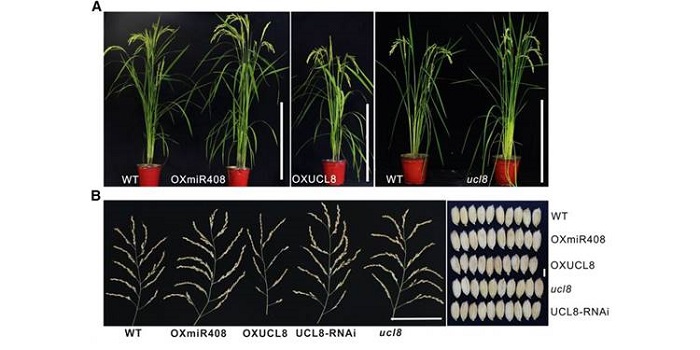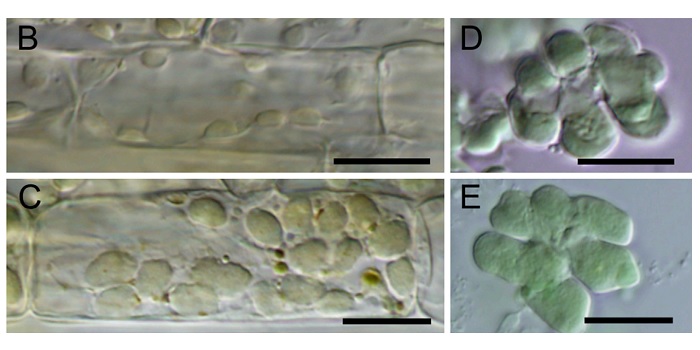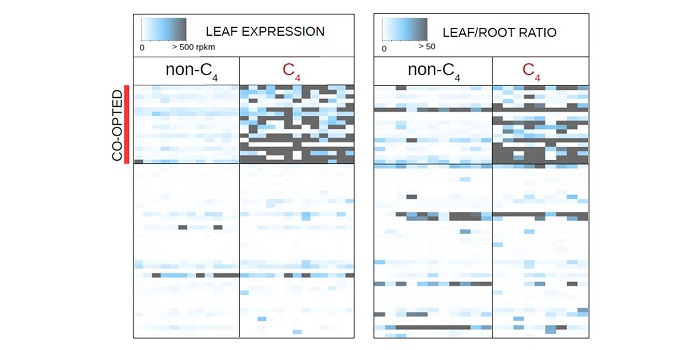
A MicroRNA Affecting Grain Yield in Rice
MicroRNAs (miRNAs), a class of abundant small noncoding RNAs, have been identified as important regulators of gene expression in plants, affecting many aspects of plant development. Recently, several miRNAs have been reported to regulate rice grain yield. A previous study revealed that miR397 regulates…

Blue Light Perception via Chlorochrome? — Give Us the Greens of Summer
What do photosynthesis, neonatal jaundice, and a next-generation solar cell have in common? All involve tetrapyrroles, complex molecules with four linked pyrrole rings, each ring containing one nitrogen and four carbon atoms. Tetrapyrroles exist in either cyclic or linear form and have a wide variety…

SHORTROOT-mediated increase in stomatal density has no impact on photosynthetic efficiency
SHORTROOT (SRT) is a transcription factor that contributes to developmental patterning non-cell autonomously, by moving between cells. In leaves, SRT has been shown to contribute to sub-epidermal patterning specified by distance from the vein. Schuler et al. explored whether it also contributes to epidermal…

Chlorophyll can be reduced in crop canopies with little penalty to photosynthesis
The effect of reducing leaf chlorophyll content on canopy CO2 assimilation (Acan) is somewhat contentious. Walker et al. obtained data from 67 soybean accessions to parameterise a canopy-root-soil model (MLCan) in order to simulate the effect of altering chlorophyll levels on Acan. There was no increase…

Light sheet microscopy imaging of light absorption and photosynthesis distribution in plant tissue
Chlorophyll fluorescence is a common tool to investigate the behavior of the photosynthetic appratus, therefore photosynthetic capacity, at any physiological state. However, the different optical density of the samples can lead to light-dependent over- or underestimation of effective PSII quantum yields.…

Re-creation of a key step in the evolutionary switch from C3 to C4 leaf anatomy
The C4 Rice project aims to transition rice from a C3 crop to one that performs C4 photosynthesis, in order to realize a predicted 50% increase in yield. Here, Wang et al. expressed a positive regulator of chloroplast development, the maize GOLDEN2-LIKE transcription factor, in rice. The resulting…

Photosynthesis in Desert Plants: It’s About Time
Boxall et al. investigate CAM photosynthesis in Kalanchoë fedtschenkoi The Plant Cell (2017). https://doi.org/10.1105/tpc.17.00301
Background: During photosynthesis, most plants use the enzyme Rubisco to capture CO2 during the day. Crassulacean acid metabolism (CAM) plants such as prickly pears,…

Update: Fluctuating light takes crop photosynthesis on a rollercoaster ride
By Elias Kaiser, Alejandro Morales, Jeremy Harbinson
The environment of the natural world in which plants live, have evolved, and within which photosynthesis operates, is one characterised by change. The time scales over which change occurs can range from seconds (or less) all the way to the geological…

Highly expressed genes are preferentially co-opted for C4 photosynthesis
One of the great questions of biology is how and why C4 photosynthesis pathway evolved independently more than 60 times. The advantages are obvious (increased productivity), but the underlying molecular predisposition to this transition remains poorly defined. Using a comparative transcriptomics approach…

